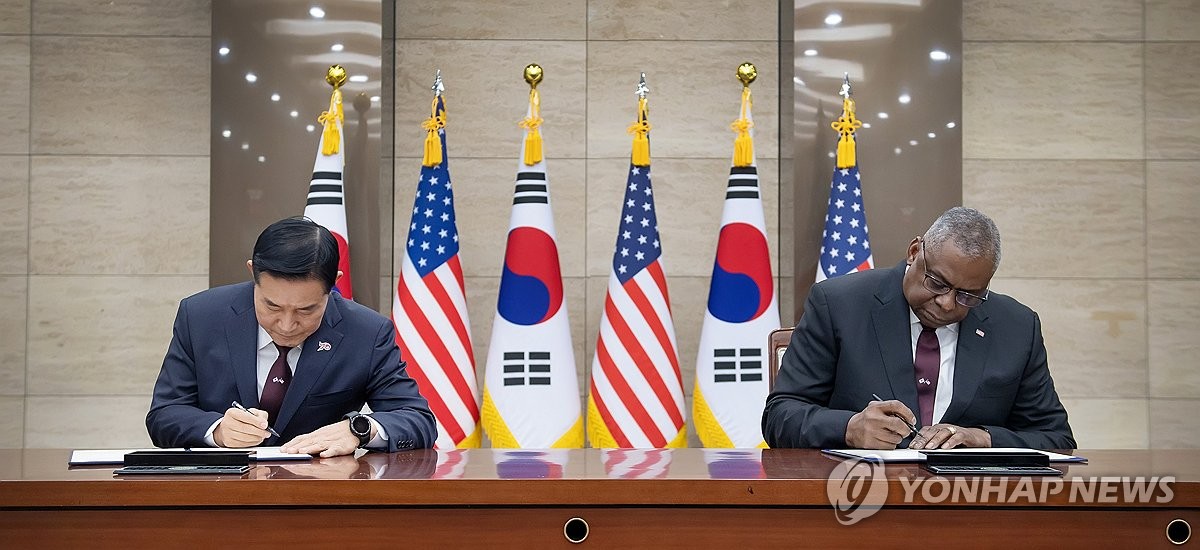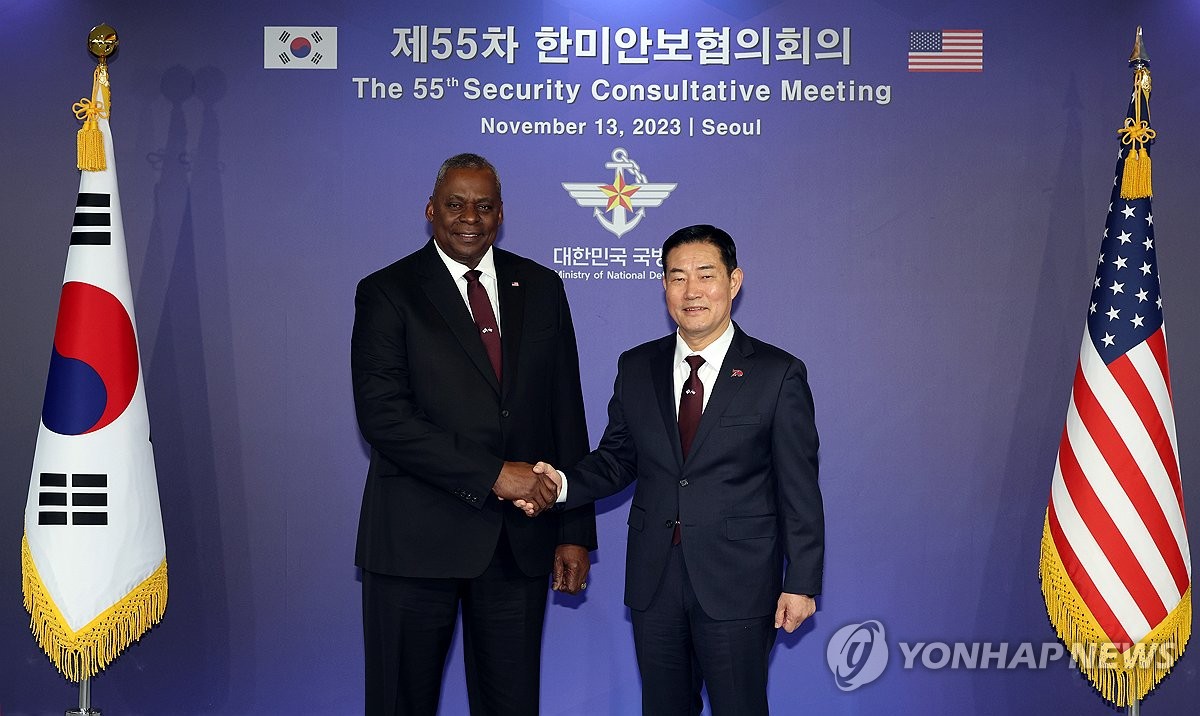- California Assembly OKs highest minimum wage in nation
- S. Korea unveils first graphic cigarette warnings
- US joins with South Korea, Japan in bid to deter North Korea
- LPGA golfer Chun In-gee finally back in action
- S. Korea won’t be top seed in final World Cup qualification round
- US men’s soccer misses 2nd straight Olympics
- US back on track in qualifying with 4-0 win over Guatemala
- High-intensity workout injuries spawn cottage industry
- CDC expands range of Zika mosquitoes into parts of Northeast
- Who knew? ‘The Walking Dead’ is helping families connect
S. Korea, U.S. revise ‘tailored deterrence strategy’ on N. Korea
The defense chiefs of South Korea and the United States updated their joint deterrence strategies on North Korea during their annual security talks Monday as part of efforts to better counter Pyongyang’s growing missile and nuclear threats.
The 2023 Tailored Deterrence Strategy (TDS), revised for the first time in 10 years, underscores the U.S. “extended deterrence” commitment to defend South Korea by using all of its nuclear and other military capabilities in the face of a nuclear-armed North Korea.
South Korean Defense Minister Shin Won-sik and U.S. Defense Secretary Lloyd Austin adopted the document during the 55th session of the annual Security Consultative Meeting in Seoul.
The allies have been working to update the key military document to better reflect the North’s advancing nuclear and missile threats, given that Pyongyang has conducted six nuclear tests and enshrined in law the right to use preemptive nuclear strikes to protect itself.
“The 2023 TDS revisions render it into a flexible and robust document that serves as a strategic framework to effectively deter and respond to advancing DPRK nuclear and other WMD and non-nuclear capabilities with strategic impacts,” the communique said.
DPRK stands for the North’s official name, Democratic People’s Republic of Korea.
“Both leaders noted that the 2023 TDS reflects guidance on ways to leverage the full range of U.S. military capabilities, including U.S. nuclear capabilities and ROK conventional capabilities, in preparation against DPRK nuclear and other WMD attacks across armistice, crisis, and wartime,” it said.
ROK stands for South Korea’s official title.
The two sides condemned the North’s provocations, such as ballistic missile launches and its purported plan to launch a space rocket vehicle, as well as the North’s arms trade with Russia, as clear violations of the U.N. Security Council resolutions.
“Secretary Austin reiterated the firm U.S. commitment to provide extended deterrence to the ROK, utilizing the full range of U.S. defense capabilities, including nuclear, conventional, missile defense, and advanced non-nuclear capabilities,” the communique said.
“He noted that any nuclear attack by the DPRK against the United States or its Allies and partners is unacceptable and will result in the end of the Kim regime in line with the 2022 Nuclear Posture Review declaratory policy,” it said of North Korean leader Kim Jong-un.

The two sides also pledged to regularly hold simulations and table-top exercises among policy, government and military personnel to better prepare for contingencies on the Korean Peninsula.
To reinforce missile defense cooperation, the U.S. agreed to share data from the military’s reconnaissance satellites with South Korea in real time.
“The secretary and the minister agreed to pursue expanded cooperation of the U.S. Shared Early Warning System (SEWS) to enhance the alliance’s detection capabilities against advanced DPRK missile threats,” it said.
They also pledged to expand the trilateral security cooperation with Japan by activating a real-time data sharing mechanism for North Korea’s missile launches next month and conduct joint drills in a systematic manner from next year.
In commemorating the 70th anniversary of the bilateral alliance, the two nations adopted a document titled “Defense Vision of the U.S.-ROK Alliance” to expand the scale and scope of their defense and security ties.

During his Seoul visit as part of his three-nation trip to the Indo-Pacific, Austin reaffirmed the U.S. “extended deterrence” commitment to use the full range of its military capabilities, including nuclear, to defend South Korea.
Shin said U.S.’ increased deployments of strategic assets to South Korea this year, including a nuclear-capable submarine’s first port call here in over 40 years and a B-52 strategic bomber’s first landing, enhanced the credibility of Washington’s extended deterrence commitment.
Austin’s visit comes at a time when Pyongyang is believed to be trying to make yet another attempt to launch a military satellite with Russian assistance following the rare summit between North Korean leader Kim Jong-un and Russian President Vladimir Putin in September.
On Tuesday, Austin will attend the inaugural defense ministerial meeting of South Korea and the United Nations Command (UNC) member states, which contributed forces to fight for South Korea during the 1950-53 Korean War, before departing for his final stop in Indonesia.











